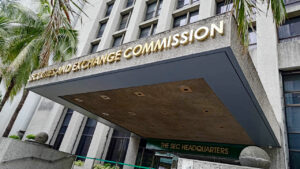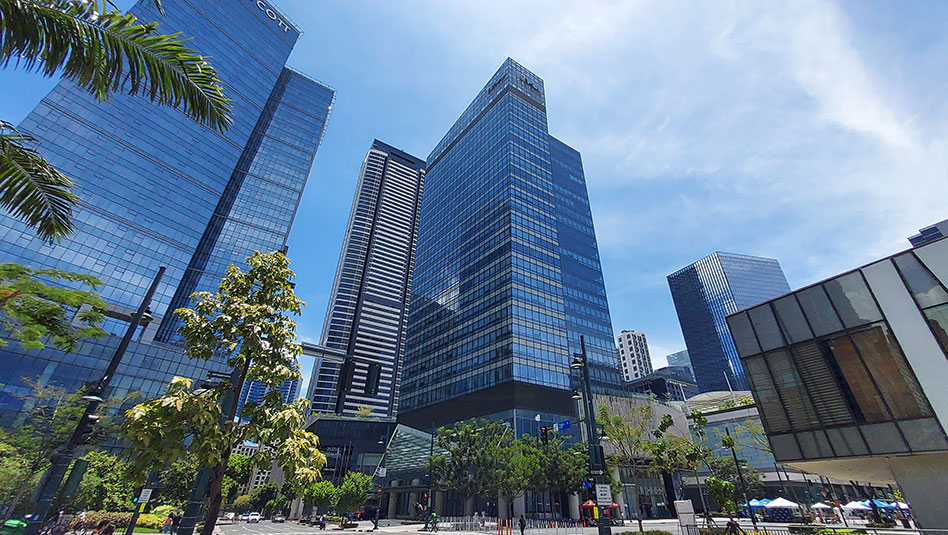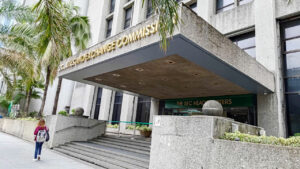The Bangko Sentral ng Pilipinas (BSP) is looking to issue guidelines for banks’ and electronic money issuers’ (EMIs) digital marketplace activities, allowing them to offer their own products as well as those from third-party providers via a single platform to better meet customers’ needs.
The draft rules allow institutions to offer both financial and nonfinancial products and services via a digital marketplace or other online distribution platforms but prohibit them from presenting offerings associated with gambling activities, such as online casinos or online betting.
The proposed guidelines aim to ensure that financial firms that want to offer their products and services via digital marketplace platforms have the governance and risk management capabilities to do so, the central bank said in a draft circular posted on its website.
“The Bangko Sentral recognizes the emergence of new business models and arrangements that will further drive innovation and financial inclusion, as well as promote customer centricity. To remain competitive, it is important for BSP-supervised financial institutions (BSFIs) to forge strategic and meaningful ecosystem partnerships with product/service providers which leverage digital distribution platforms or channels. Through these ecosystem partnerships, customers are provided with a broad selection of financial and nonfinancial products and services through the banks/EMIs’ digital marketplace which will create a more tailored and holistic customer experience that cater to their needs and expectations,” it said.
“In this light, the Bangko Sentral supports the adoption of digital marketplace model by banks and electronic money issuers. Underpinning the adoption of a digital marketplace model is sound governance, risk management and consumer protection systems, including an effective, consent-driven information sharing arrangement to ensure that attendant risks are adequately managed, and consumer interests are protected.”
The BSP said a digital marketplace model will allow banks and EMIs to offer their own core products and services along with those of third-party providers via a single platform to meet “evolving” customer demands.
“By presenting third-party products/services in their digital platforms, banks and EMIs remain focused on their core business, while at the same time, provide broader suite of related products and services for a more tailored and holistic customer experience, and build greater consumer trust,” it said.
Under the draft rules, the activities in a digital marketplace operated by a bank or EMI shall be limited to the offering of its own products and services and the presentation or display of the products and services of product or service providers (PSP) that are not supervised by the BSP.
“The marketplace may facilitate the customer’s comparison and selection from a range of products and services from different PSPs that best meet customer needs, as well as the application for and/or approval of selected products or services.”
The marketplace operator may also perform additional functions like preliminary screening or underwriting and credit risk assessment. It may also act as an intermediary to facilitate payments and transactions, including integrating or connecting third-party systems to the marketplace to allow purchases, subscriptions, order taking, or request processing, through the marketplace.
The products and services that can be offered in a digital marketplace include retail deposit products, retail loan products, business loan products, plain vanilla debt and equity securities, e-money or payment cards, and retail insurance products, among others.
Operators may also offer non-financial products or services created or distributed by an accredited PSP that complement their business models or strategies.
“Products and services that are associated with gambling activities (e.g., online casinos, online betting, electronic gaming, or other forms of gambling/gaming), or any activities that could undermine the reputation of the marketplace participants and the financial system, are prohibited to be offered or presented in the marketplace,” the central bank said.
A bank or EMI must get BSP approval to become a digital marketplace operator. Processing fees range from P10,000 to P50,000 depending on the type of firm, while licensing fees are from P50,000 to P200,000.
Banks or EMIs looking to operate digital marketplaces must meet the BSP’s prudential criteria, have a net worth or combined capital of at least P1 billion and have “adequate” risk management systems related to information technology (IT), cybersecurity, anti-money laundering/countering terrorism and proliferation financing, data privacy, consumer protection and market conduct, among others.
They must also have an advanced electronic payments and financial services license.
“A bank or EMI granted with authority to engage as marketplace operator shall continuously comply with the qualification requirements even after the authority has been granted. Any deviation or noncompliance may be a basis for the imposition of appropriate enforcement actions, including revocation of authority to engage as marketplace operator,” the BSP added.
Meanwhile, the proposed rules also include guidelines on BSFIs that will act as product or service providers in a digital marketplace or other digital distribution platform operated or owned by another bank, EMI, or entities not supervised by the BSP.
The central bank said BSFIs with a Supervisory Assessment Framework (SAFr) rating of at least “3” are allowed to present or distribute products or services in a digital marketplace or other digital distribution platform without prior BSP approval and notification.
Those with SAFr ratings below “3” or those that will engage a marketplace operator not supervised by the Bangko Sentral must comply with the necessary notification requirements, it said.
BSFIs must conduct due diligence prior to entering into an arrangement with a digital marketplace or other distribution platform operated by third parties, the BSP said. These arrangements must be supported by a contract or service level agreement that covers the scope of work or services, fee structure, responsibilities of both parties, data governance, business continuity plans, and asset recovery, among others.
“The marketplace participants shall ensure that appropriate products or services are offered and/or recommended in the marketplace considering the needs, goals, and financial capabilities of consumers,” the BSP added.
It also mandates that marketplace participants must adhere to the applicable laws, rules and regulations on consumer protection.
“Marketplace participants shall establish an effective complaint handling and redress mechanism to ensure that any complaints that may arise from digital marketplace activities are resolved in a fair, timely and efficient manner,” the central bank said.
The draft also includes guidelines on product bundling, cooling-off policy, data governance and consent management, among others.
Marketplace participants of existing digital platforms must comply with the BSP’s requirements within a year from the effectivity of the circular once it is approved. — Luisa Maria Jacinta C. Jocson







 DOWNLOAD
DOWNLOAD













